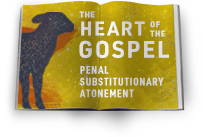How Does the Cross of Christ Make Sense of the Kingdom of God?
Perspectives on Jesus have been offered from all over the world, but the voice of the man closest to the cross of Christ has rarely been heard. “Jesus, remember me when you come into your kingdom” (Luke 23:42). How could this thief view a beaten, bloodied, and crucified criminal as one who rules over a kingdom? Maybe he was confused by the title “King of the Jews” on Jesus’ cross or by the crown of thorns on his head. Or perhaps, as Jesus’ response indicates, this man rightly saw the kingdom of God in the crucified Christ.
Unfortunately today, many Christians either cling to the cross or champion the kingdom, usually one to the exclusion of the other. Countless books on the kingdom hardly mention Christ’s cross. Volumes on the cross ignore Jesus’ message of the kingdom. The polarization of these two biblical themes leads to divergent approaches: cross-centered theology that focuses on the salvation of sinners or kingdom-minded activism that seeks to change the world. Whole churches or movements are built on one idea or the other. It’s as if we are left with a choice between either a kingdom without a cross or a cross without a kingdom; this false dichotomy truncates the gospel and cripples the church.
Of course, one should not have to choose between biblical doctrines. And, as we will see, we can understand the kingdom and the cross as gloriously integrated within the whole counsel of God and the story of redemption. But first, before getting to the solution, we must first understand the problem.
KINGDOM VERSUS CROSS
How did the church get to this unfortunate place of pitting important biblical doctrines against one another? Although there has always been confusion with or resistance to the paradoxical integration of kingdom and cross, such a stark division has not always been the case. In the first century, Barnabas declared that “the kingdom of Jesus is based on the wooden cross” (Epistle of Barnabas 8:5). [1] According to Augustine, “The Lord has established his sovereignty from a tree. Who is it who fights with wood? Christ. From his cross he has conquered kings.” [2] Luther chastises those who “cannot harmonize the two ideas—that Christ should be the King of Kings and that He should also suffer and be executed.” [3]
The ugly ditch between the kingdom and the cross began to emerge after the Enlightenment and was particularly widened through America’s social gospel movement of the twentieth century. Walter Rauschenbusch, drawing from nineteenth-century German liberalism, emphasized the kingdom of God to the extent that he essentially eclipsed the cross. It’s not just that this movement neglected the gospel of what God has done through Christ’s death and resurrection. They redefined the gospel to be a message about what we do in making the world a better place. H. Richard Niebuhr’s assessment of this theology is fitting: “A God without wrath brought men without sin into a kingdom without judgment through the ministrations of a Christ without a cross.” [4] Conservatives reacted sharply by reclaiming the centrality of the cross, but often relegating the kingdom solely to the future or ignoring it altogether, thereby setting in place the defining feature of the history of this discussion: pendulum-swinging reductionism.
The fact that two of the primary themes in Scripture have been torn apart and often turned against each other poses an enormous problem. We need a better way forward than “kingdom versus cross.” And it’s not enough to merely seek “kingdom and cross,” as if these were two competing values that need to be held in tension. The key is not balance, but integration. And that’s exactly what we find in Scripture, an unfolding narrative that weaves together atonement and kingdom like a crown of thorns, fit for a crucified king.
THE STORY OF VICTORY THROUGH SACRIFICE
The kingdom and the cross ultimately come together in Christ, the one who reigns over the kingdom and suffers on the cross. But Jesus is not a generic superhero. He’s the Messiah, Israel’s long-awaited Savior who would fulfill all of God’s promises. This unfolding story of redemption provides the proper framework for understanding the connection between the kingdom and the cross.
The story begins in a garden, and although the phrase “kingdom of God” does not appear until later, the concept of the kingdom of God has its roots in the soil of Eden. Genesis 1–2 portrays God as a loving king who rules over his good creation through his image-bearing people. And that’s how I define the kingdom: God’s reign through God’s people over God’s creation. [5]
But instead of ruling over the earth, Adam and Eve submit to the rule of one of its craftiest creatures—the serpent—thereby fracturing their relationship with God and collapsing the project aimed at God’s reign over all the earth. Instead of going forth from Eden to expand the blessing of God’s royal presence, they are banished from the garden to a wandering existence that instead spreads the curse.
Yet even amidst rebellious treason, God would not give up on his kingdom project. From the cursed dirt of Eden, redemptive history sprouts forth with the promise of the “seed” of a woman who will crush the head of the serpent while suffering a bruised heel in the process (Gen. 3:15). The victory of the seed will reverse the curse and renew God’s creation. But while the end goal is still God’s reign over all the earth, the promise of victory now includes the price of suffering. Henceforth, a pattern emerges in the story of Adam and Israel whereby victory comes through suffering, exaltation through humiliation, and ultimately, the kingdom through the cross.
The counterintuitive pattern of victory through sacrifice can be seen throughout the story of Israel. God makes a promise to Abraham to bless the nations and seals a covenant with a sacrifice. God redeems his people from slavery in Egypt through the blood of a sacrificial lamb. King David overcomes the giant through humble means, and his royalty is characterized by righteous suffering. The prophet Isaiah explicitly reveals how the victory of the kingdom hinges on the suffering of a servant. But while we find the pattern of victory through sacrifice throughout the Old Testament, this pattern culminates in the coming of the Messiah.
THE CRUCIFIED KING
Jesus came proclaiming the kingdom of God but his royal mission led him to a gruesome death on a Roman cross. From an earthly perspective, it certainly appeared that the cross represented the failure of Christ’s kingdom mission. The Gospel of Mark, however, subtly yet powerfully shows that the cross is not a stumbling stone to the kingdom of God; it is its cornerstone.
Mark’s account of the crucifixion is filled with royal imagery. Jesus is given a purple robe, a scepter in his hand, and a crown of thorns on his head (Mark 15:17). Even as he hangs on the cross, the sign above his head reads, “The King of the Jews” (Mark 15:26). Mark is showing through irony that the one mocked as king truly is king. But he’s a different kind of king. The onlookers ridicule Jesus, saying, “Save yourself, and come down from the cross!” (v. 30). Yet Jesus reveals his kingship not by coming down from the cross to save himself but by staying on the cross to save others. The cross is the greatest display of Christ’s reign as power controlled by love.
According to Mark (and the other Gospels as well), the kingdom mission of Jesus does not terminate at the cross. Jesus is king on the cross: forgiving sin, defeating evil, and establishing God’s kingdom on earth as it is in heaven. The cross is neither the failure of Jesus’s messianic ministry, nor is it a prelude to his royal glory. It is the apex of his kingdom mission. The splendor of God’s royal power shines brightest through the sacrificial death of the Son of God. The cross is the crowning achievement of Christ’s kingdom mission.
In John’s account of the life of Christ, everything moves toward the climactic “hour” when Jesus, being “lifted up” on the cross, is truly being enthroned in glory (John 12:23–32; cf. 3:14, 8:28). The cross becomes not only the center of redemptive history but also the fulcrum upon which the logic of the world is turned upside down. Shame is transformed into glory, foolishness into wisdom, and humiliation into exaltation. The cross is the throne from which Christ rules the world.
We learn throughout the rest of the New Testament that the death of Christ is a multifaceted accomplishment within the narrative of God bringing his kingdom on earth as it is in heaven. While the accomplishments of the cross are unending, the heart of the cross, out of which everything else flows, is substitutionary atonement. Christ died in our place, for our sins, to reconcile sinners to the God who is making all things new by grace.
In sum, from the bruised heel of Genesis 3:15 to the reigning lamb of Revelation 22:1, the Bible is a redemptive story of a crucified messiah who brings the kingdom through his atoning death on the cross.
THE KINGDOM THROUGH THE CROSS
How, then, can we summarize the relationship between the kingdom and the cross? While many rend asunder the kingdom and the cross, Scripture presents a mutually enriching relationship between the two that draws from the story of Israel and culminates in the crucifixion of Christ the king. The story of redemption reveals that the promises of the kingdom (for example, victory over enemies, forgiveness of sin, new exodus) find their fulfillment primarily in the cross of Christ.
Furthermore, kingdom and cross need not vie for position in the story of redemption because they play different roles. The cross is central (the climactic mid-point of the story) and the kingdom is telic (the end-goal of the story). The glory of God’s wisdom, however, is displayed in the manner that the end-time kingdom has broken into the middle of history through the death of the messiah.
In short, the kingdom and the cross are held together by the Christ—Israel’s Messiah—who brings God’s reign on earth through his atoning death on the cross. The kingdom is the ultimate goal of the cross, and the cross is the means by which the kingdom comes. The shocking paradox of God’s reign through Christ crucified certainly appears foolish to fallen human logic; however, perceived through faith, it is the very power and wisdom of God.
To say that the kingdom is established by the cross certainly does not rule out or even minimize the importance of the other aspects of Christ’s saving work. The death of Christ is the decisive moment, though certainly not the only significant moment. God’s kingdom was present in Jesus’ life, proclaimed in his preaching, glimpsed in his miracles and exorcisms, established by his death, and inaugurated through the resurrection. It’s now being advanced by the Holy Spirit through the church, and will be consummated in Christ’s return.
A CROSS-SHAPED KINGDOM
Dietrich Bonhoeffer once said, “A king who dies on the cross must be the king of a rather strange kingdom.” [6] A strange kingdom indeed—for while the kingdoms of this world are built by force, the kingdom of God is founded on grace. Since God’s kingdom is established and forever shaped by the cross of Christ, we can say it truly is a cross-shaped kingdom. The cross creates a community of ransomed people living under the reign of God.
The cross-shaped kingdom provides a framework for a life of devotion to the king. For through the cross, we are not only forgiven of our sins, but we are also made followers of our Savior. Jesus says, “If anyone would come after me, let him deny himself and take up his cross daily and follow me” (Luke 9:23). To follow the king, we have to take up our crosses. Followers of Jesus are bound for glory. But whats true for Christ is also true for those who are “in Christ”: glory comes through suffering. As coheirs of the kingdom with Christ, “we suffer with him in order that we may also be glorified with him” (Rom. 8:17). As Martin Luther King Jr. said, “Christianity has always insisted that the cross we bear always precedes the crown we wear.” [7]
The kingdom was established through the self-giving love of Christ, and it will be advanced through the self-giving love of his people. The kingdom comes through suffering and service. We are saved from sin and the kingdom of darkness, but we are saved for Jesus and his kingdom of light. The sacrificial love of God displayed in the cross creates a people who lovingly give of themselves for the well-being of others. The kingdom of God is marked by justice, and those who have been justified before God have more reason than any to seek justice for the weak, the poor, and the oppressed. And yet, to be clear, we do not build the kingdom for God, we receive it from God (Heb 11:28). The kingdom of God is not the culmination of human potential and effort but the intervention of God’s royal grace into a sinful and broken world.
THE KING OF THE JEWS AND THE CROWN OF THORNS
Jesus was crucified with a title over his head that declared him to be a king. But while the title on Christ’s cross—“The King of the Jews”—makes explicit the connection between the kingdom and the cross, perhaps the crown of thorns provides the best image for explaining how they relate. The thorns, which were a sign of the curse and defeat of Adam, truly symbolize the paradoxical synthesis of Christ’s sovereign rule and his sin-bearing sacrifice. The twisted thorns picture how atonement and kingdom are interwoven throughout the grand story of redemption as the goal of history and the means by which it is achieved. The kingdom comes in power, but the power of the gospel is Christ crucified.
[1] Michael Holmes, ed. and trans., The Apostolic Fathers in English (3rd ed.; Grand Rapids: Baker Academic, 2006), 186.
[2] Augustine, Exposition of Psalm 95 (406–407), WSA 18:425.
[3] Luther, Psalm 110 (1539), LW 13:344.
[4] H. Richard Niebuhr, The Kingdom of God in America (New York: Harper & Row, 1937), 197.
[5] For a more thorough understanding of the kingdom of God, see Jeremy Treat, Seek First: How the Kingdom of God Changes Everything (Grand Rapids: Zondervan, 2019).
[6] Dietrich Bonhoeffer, God Is on the Cross: Reflections on Lent and Easter (Louisville: Westminster John Knox, 2012), 69.
[7] Martin Luther King Jr., Strength to Love (Minneapolis: Fortress, 2010), 19.









